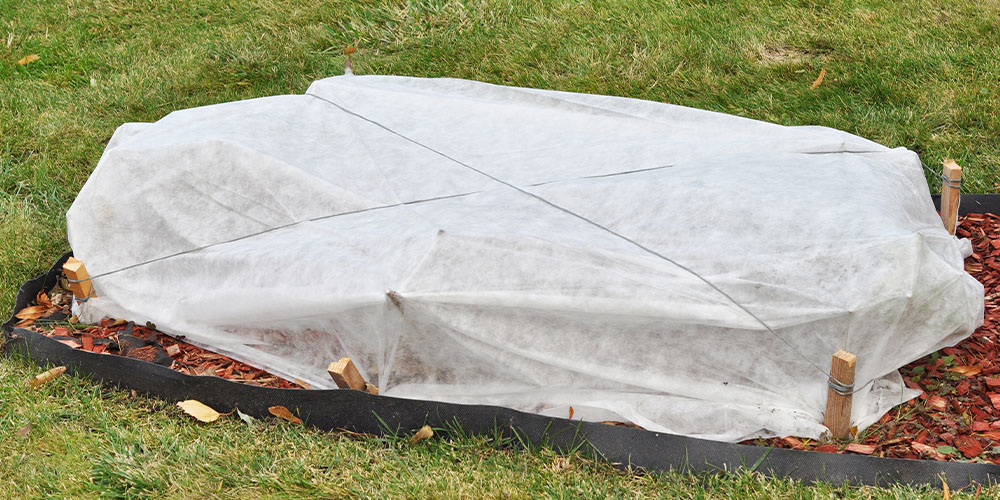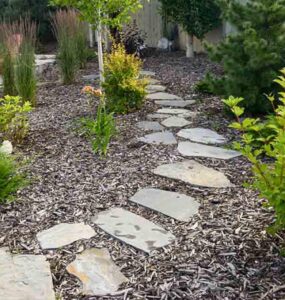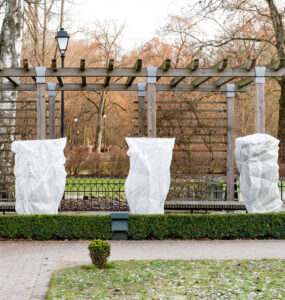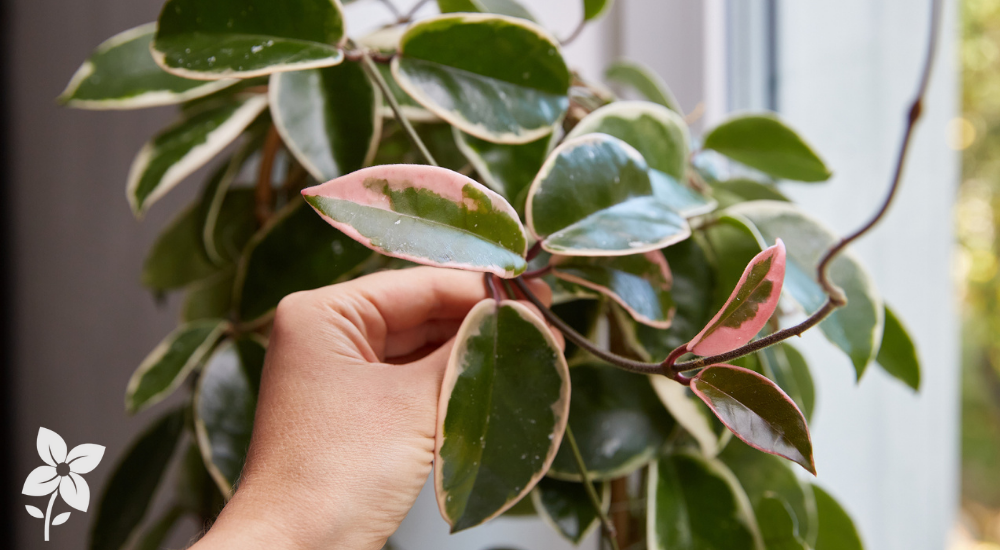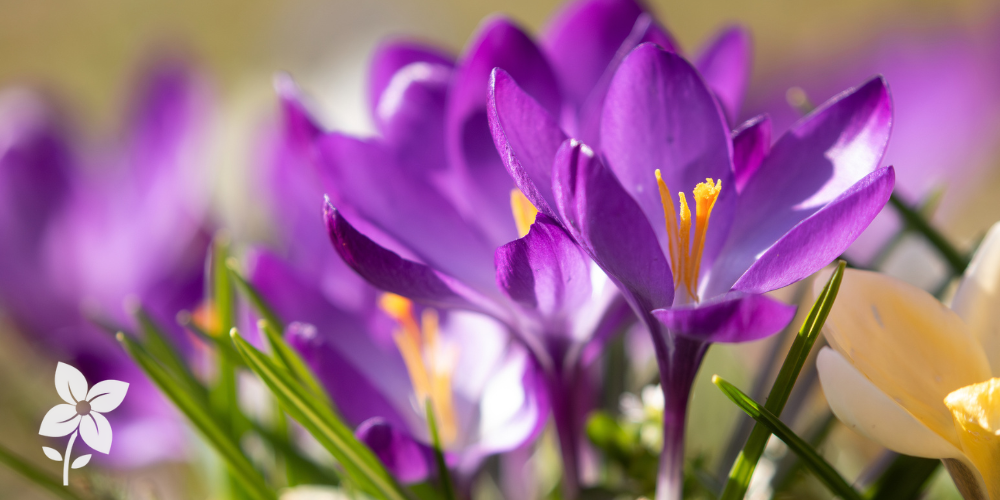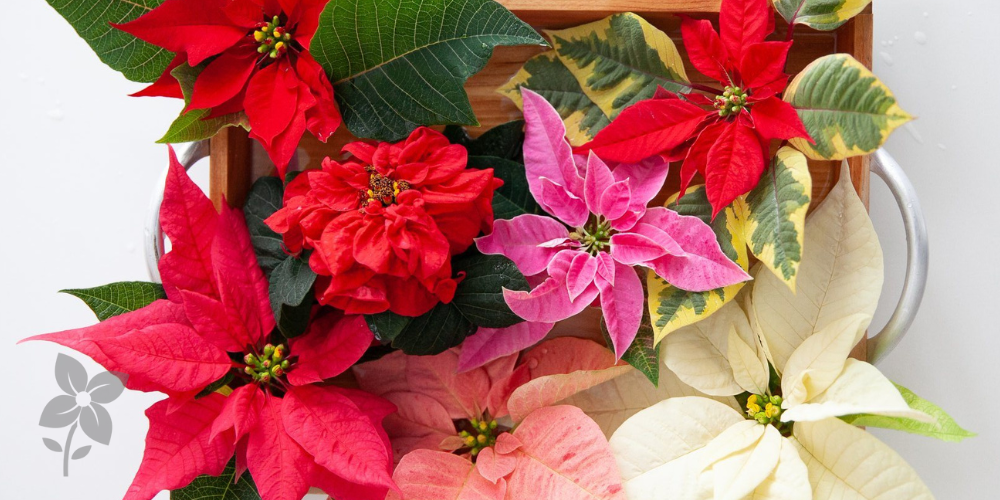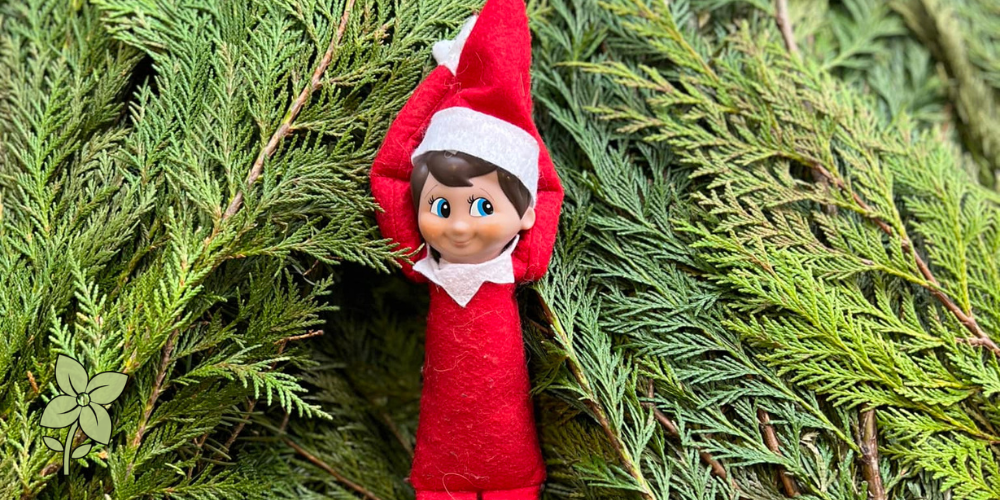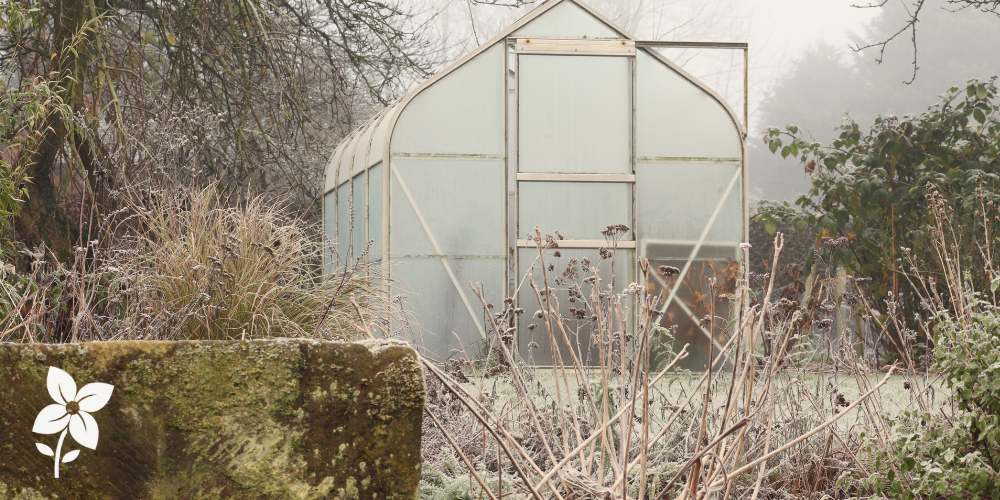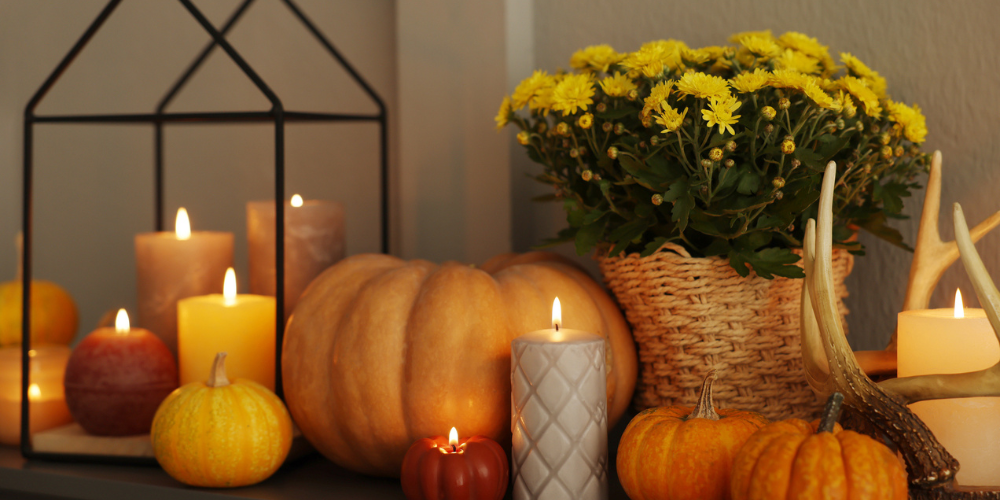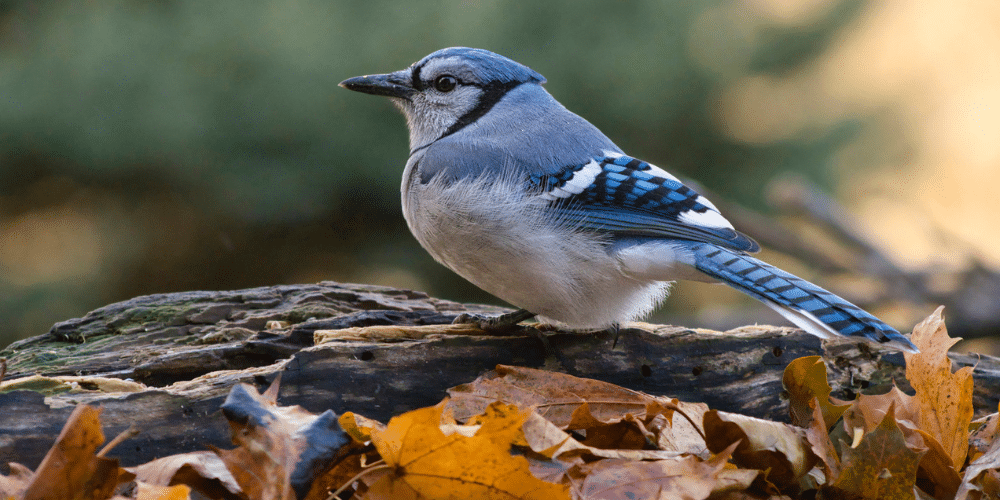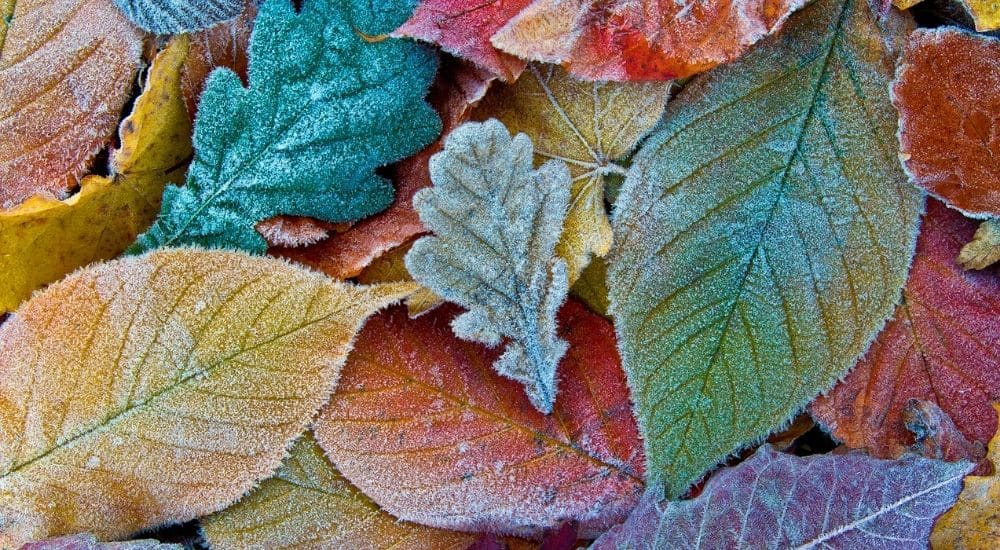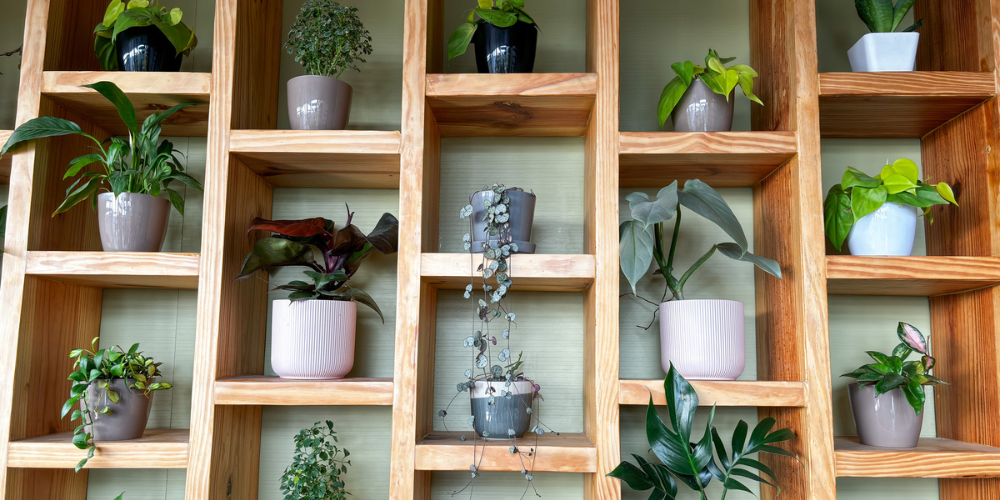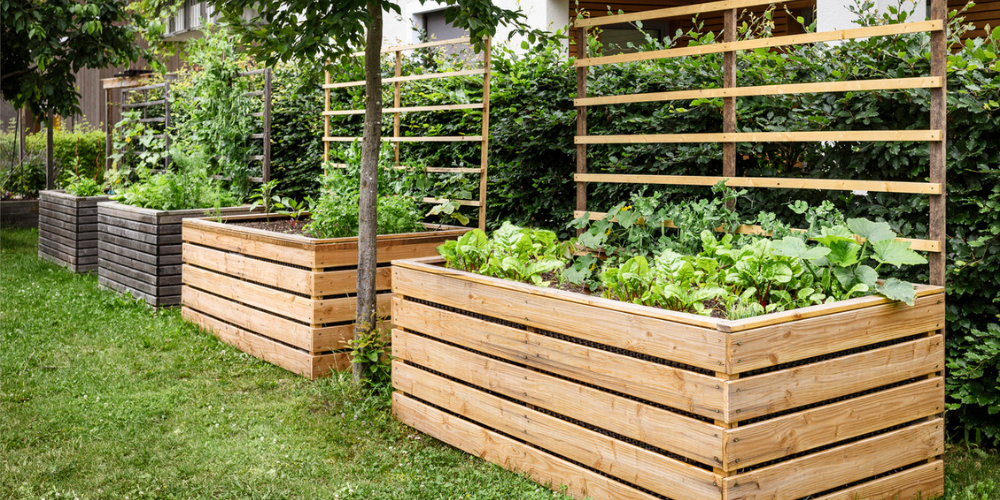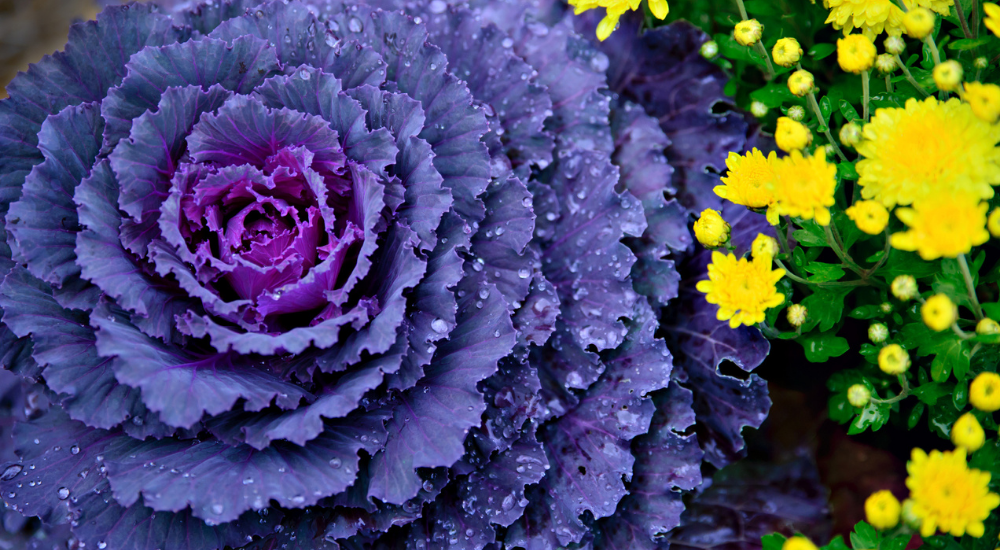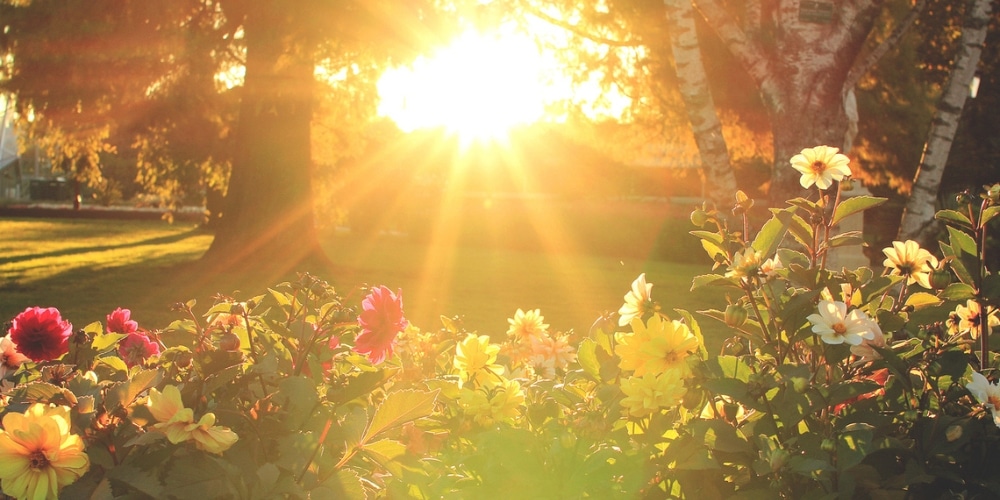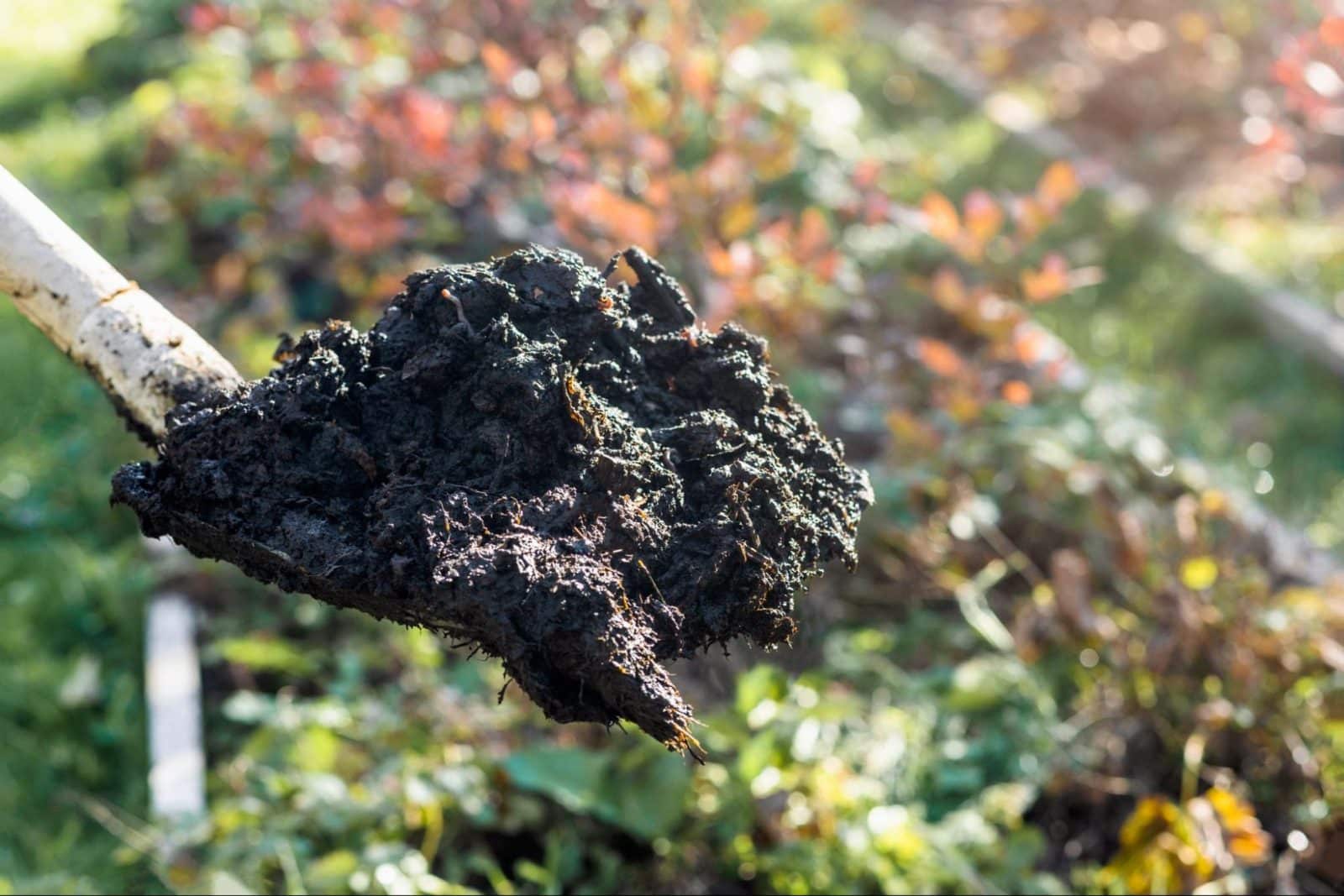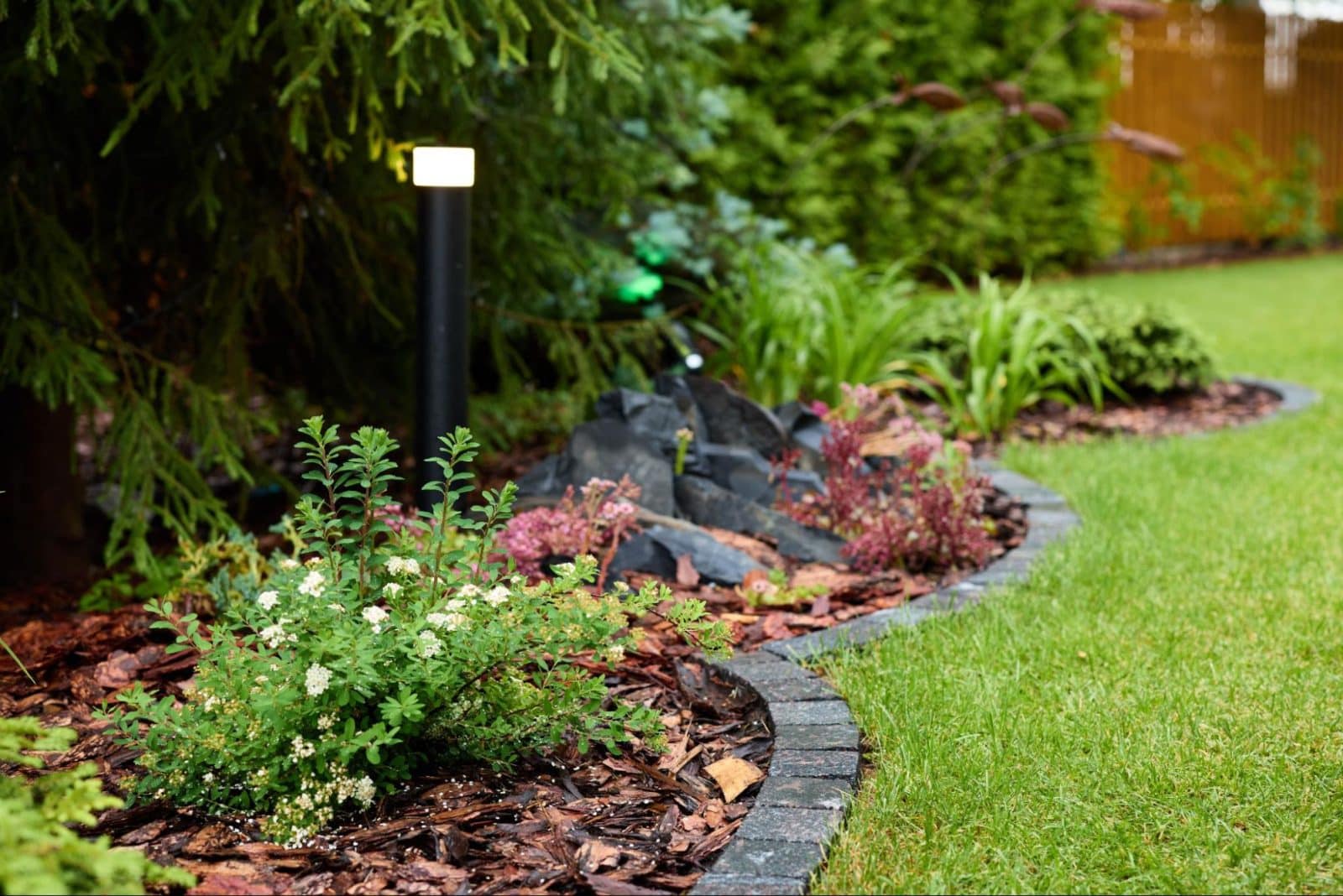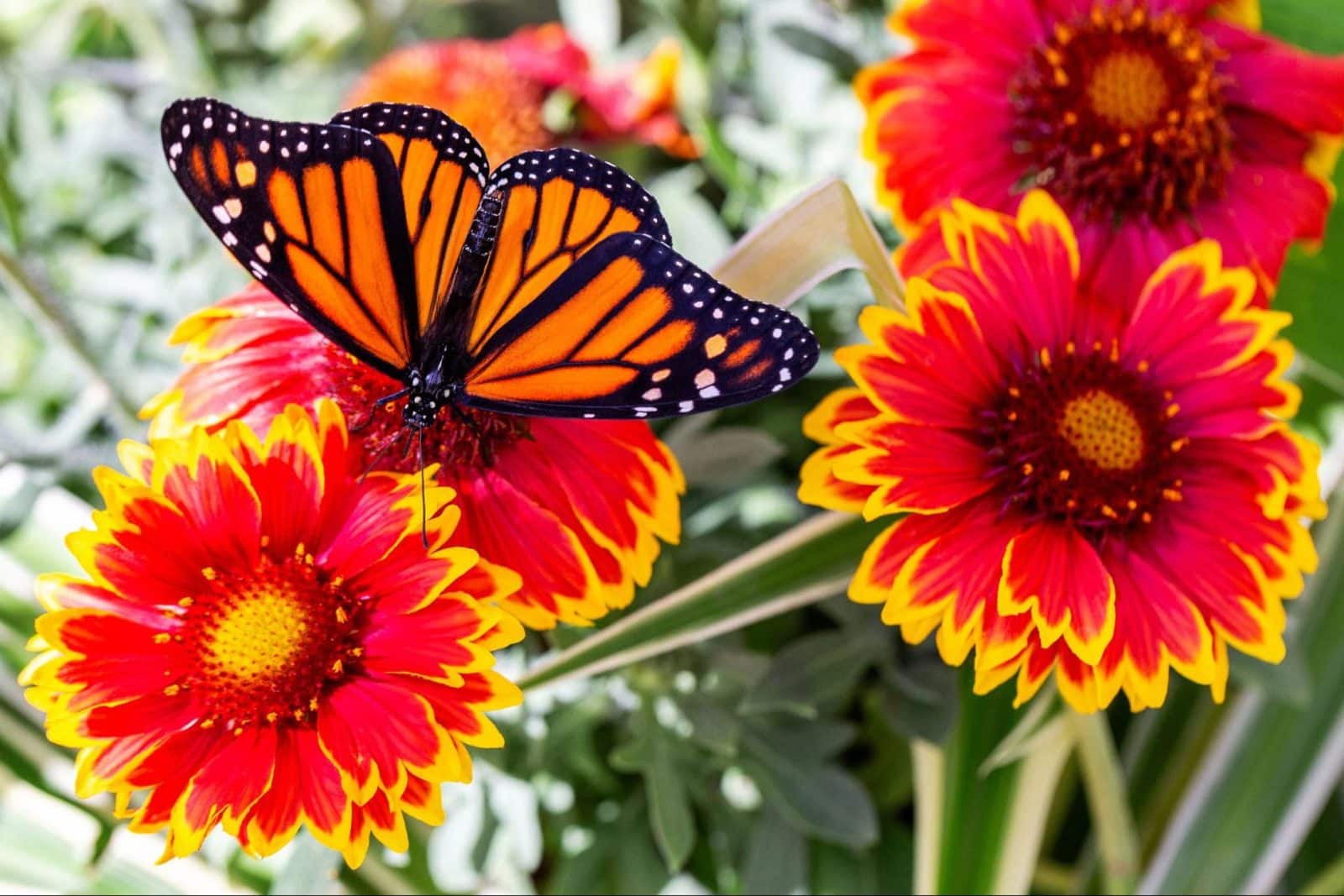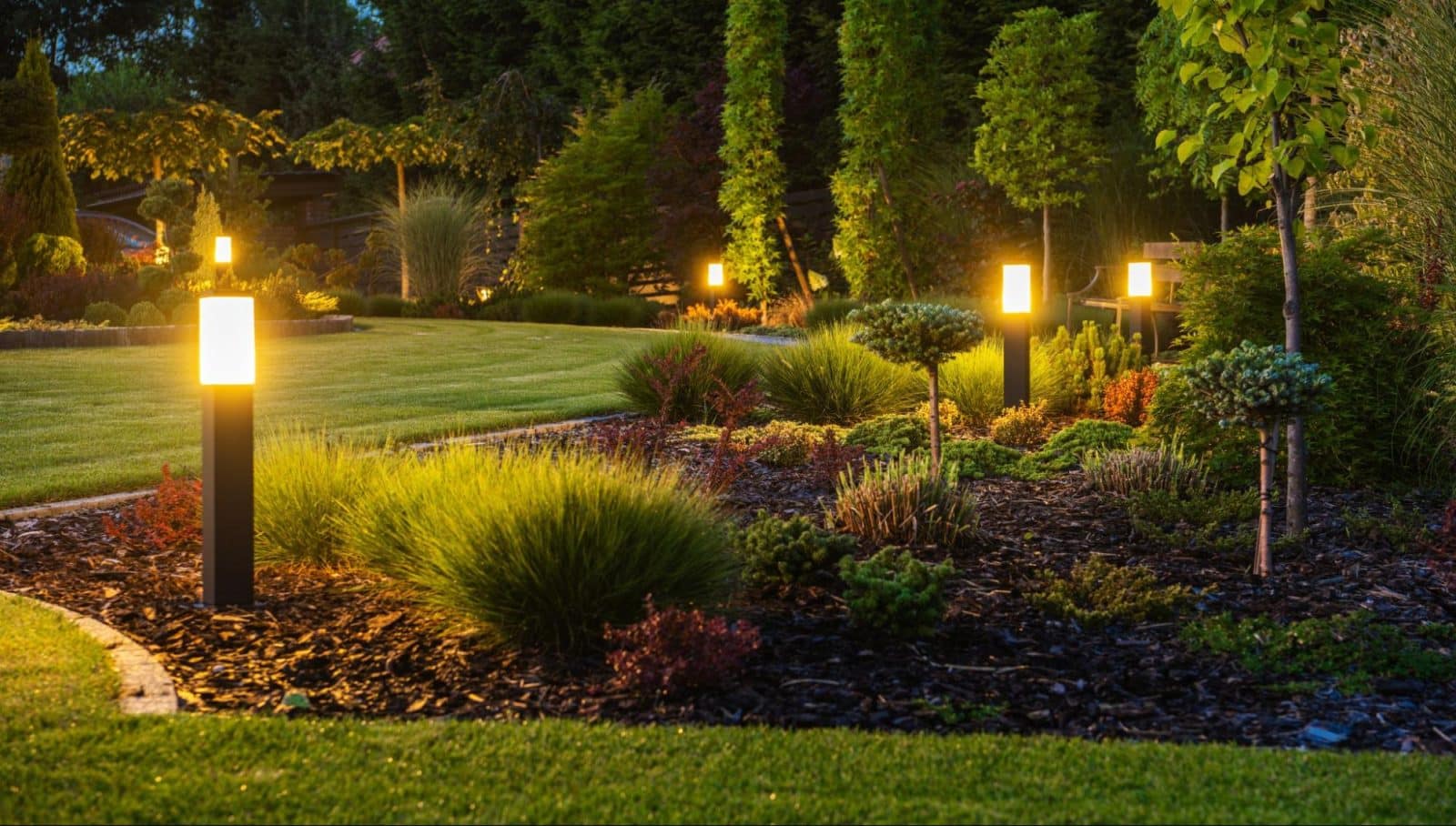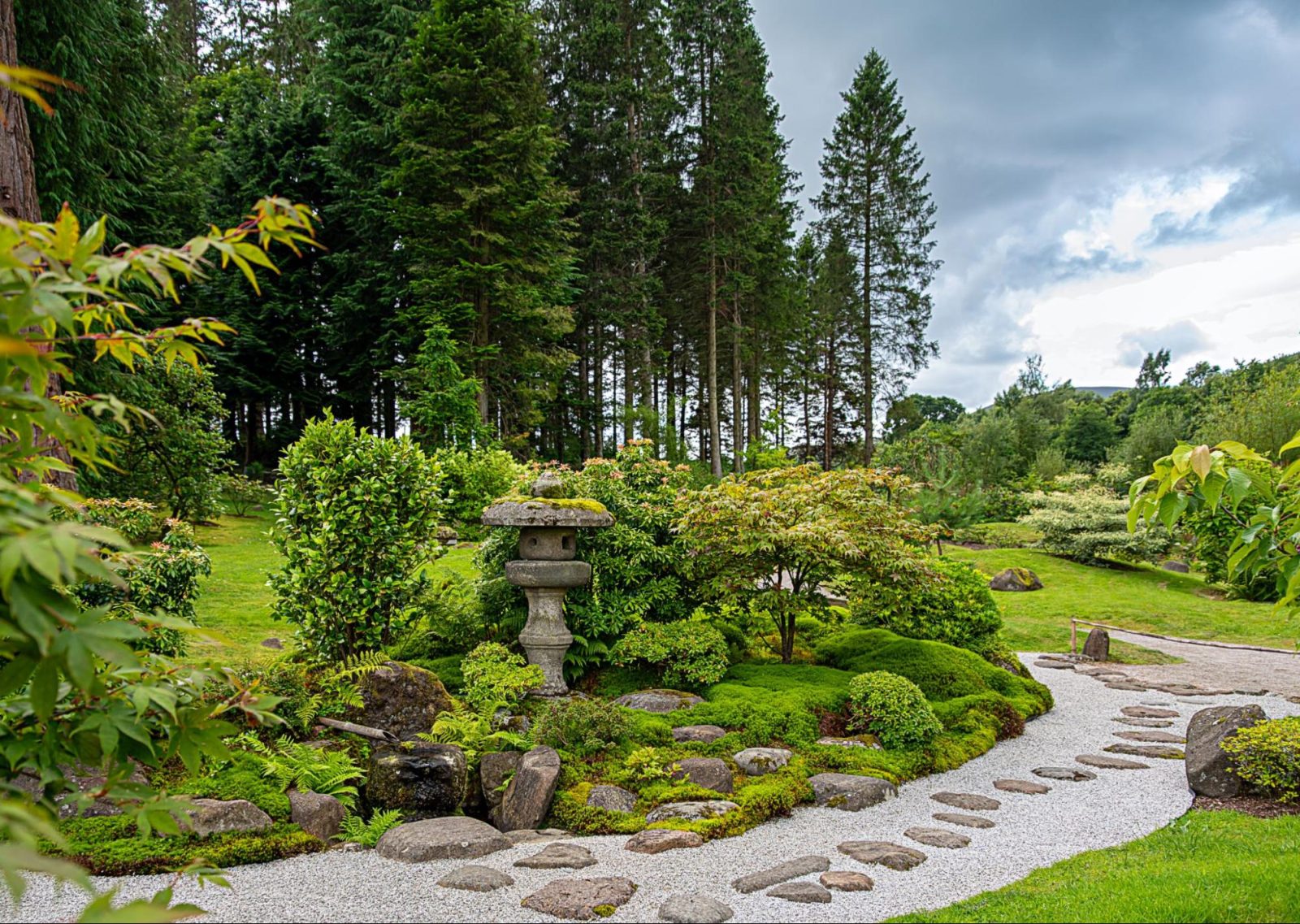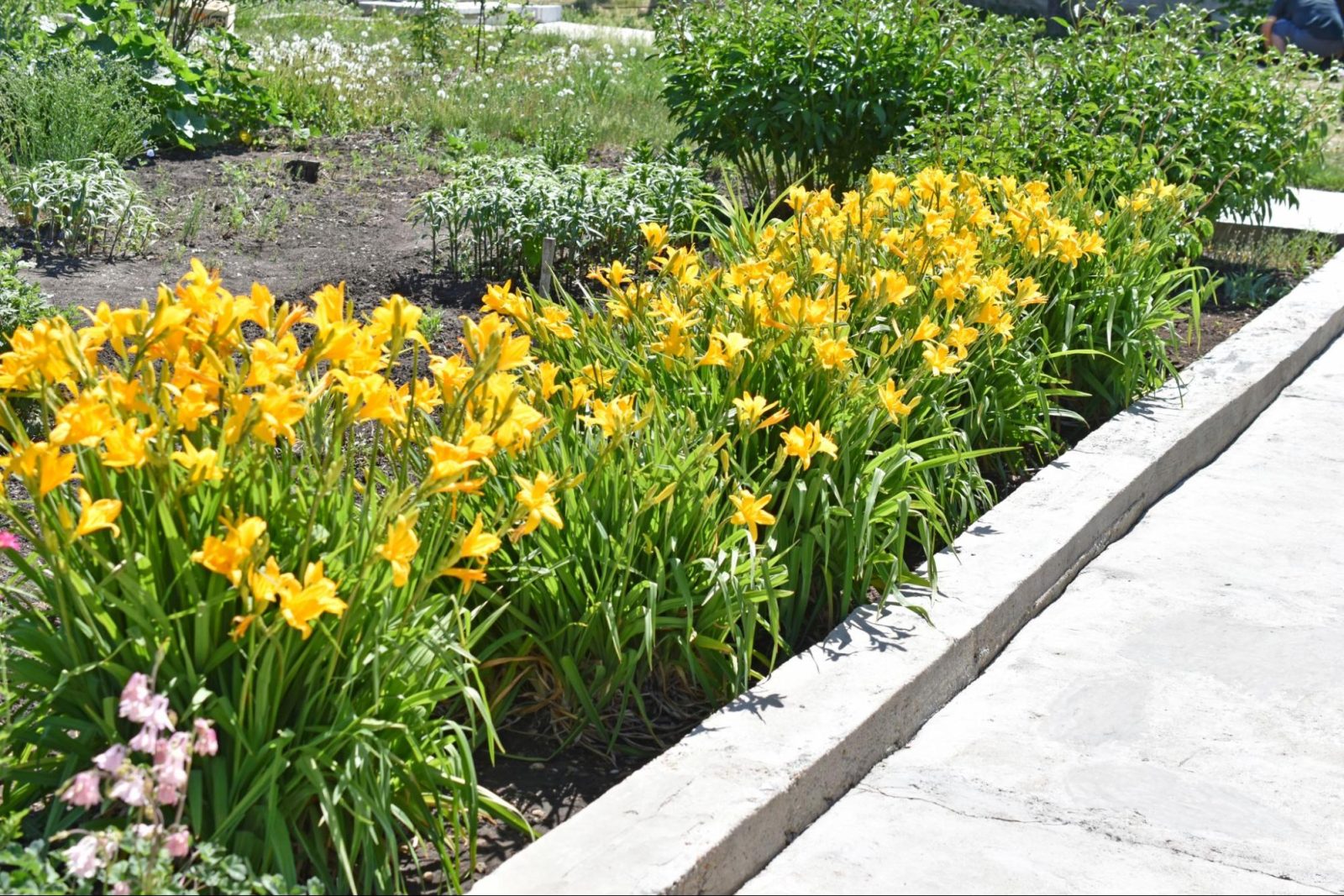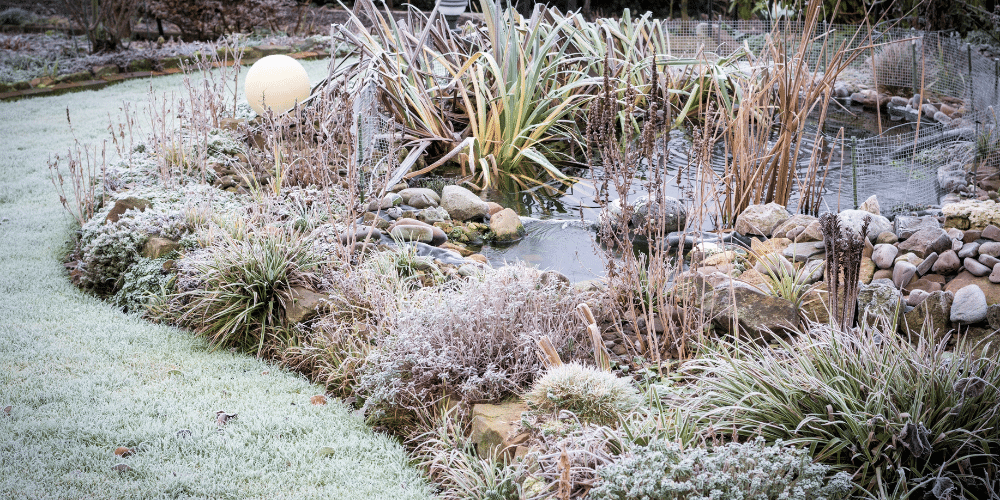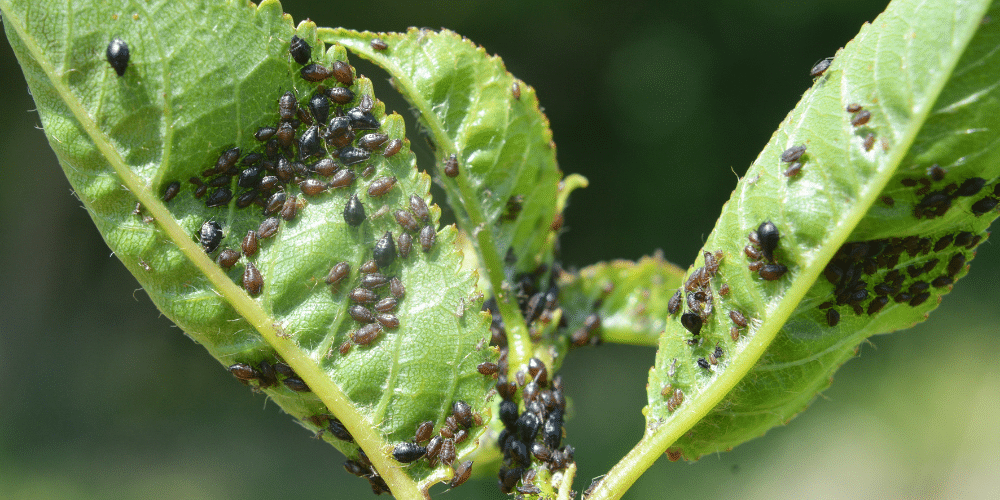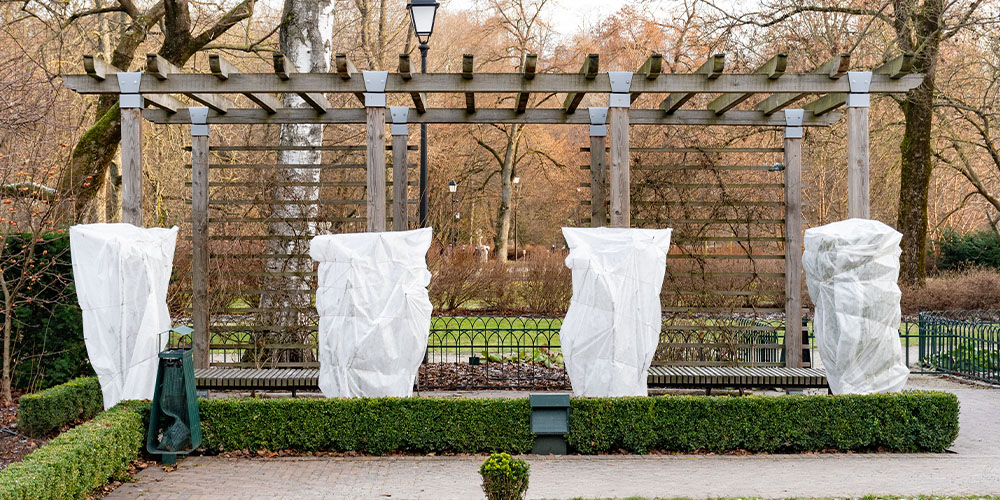
Jack Frost works hard, but green thumbs can work harder! Get busy planning and preparing for winter. Winterizing your garden and landscaping is your best chance at keeping your garden thriving for next year.
How do I Winterize my Landscaping?
Winterizing everything on your landscape takes some time and planning””but it is always worth it! Your hard work during the warm months should be protected. Assess everything in your landscaping that needs some extra help to survive the colder months. Before you get to work winterizing your landscaping, make a list of all that needs to get done and what requires protection. Here’s a guide to get you started:
- Clearing leaves off your lawn.
- Young trees or new transplants that need extra protection.
- Tender plants that need to be brought inside.
- Shrubs that need winterizing.
- Garden beds that need covering.
- Planting fall bulbs for next spring.
- Any landscaping repairs and maintenance.
Winterizing Young Landscaping Trees
In most cases, you should make sure newer trees have their trunks wrapped in plastic tubing. The plastic tubing around the base of the trunk prevents deer from damaging the wood or bark with their sharp antlers; a cage of wire mesh fencing can also help prevent wildlife damage. In terms of cold weather, shrubs and trees for our zone are hardy and adapted to tolerate the winter chill, but sometimes an extra layer of protection is warranted when it comes to new fall plantings. To protect young trees and shrubs from the extremes of the freeze and thaw cycle, try these preventative measures:
- Water deeply before frost hits.
- Give more susceptible plantings a “winter coat” by covering them in burlap.
- Put down a good layer of mulch.
Note: Wrapping some trees such as cedars too tightly can restrict airflow, which is harmful to the tree. While wrapping them loosely in burlap is a popular choice, it can cause more harm than good if not done properly.
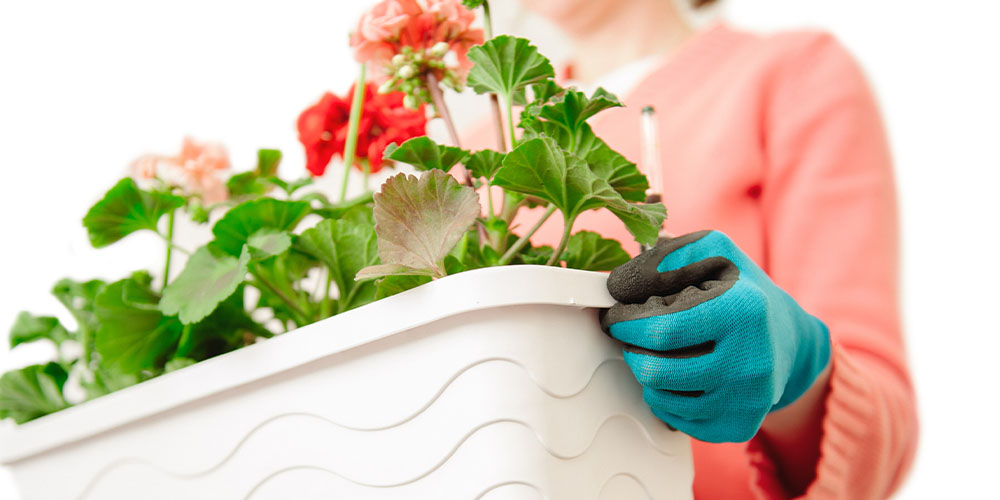
Protecting Tender Plants in Winter
If you have sensitive plants or tubers like elephant’s ears, cannas, dahlias, or fig trees, you will need to bring them in for the winter if you want them to survive. You can even bring in your geraniums! Our harsh winters are hard on the more tender plants, so bringing them in to either protect them from the cold or let them safely go dormant is an important part of your winterizing plans.
Protecting Your Garden Beds in Winter
Not all garden beds are created alike! If you already have established flower beds, you likely won’t need to worry about covering them. Protecting newly-planted perennials during the chilly months is ideal for keeping them safe and surviving until next spring. Garden cloches act as protective greenhouses for seedlings or new perennials, but in general a good, thick layer of mulch should do.
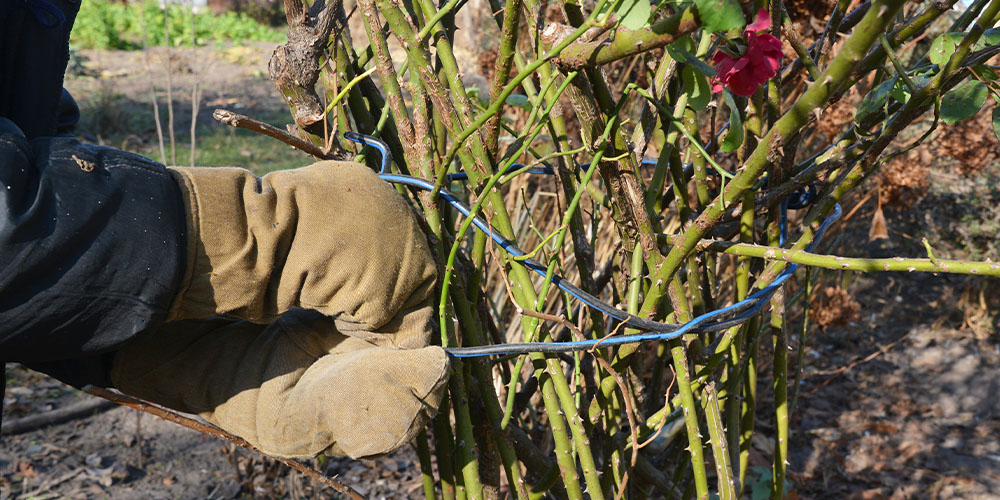
How to Winterize Shrubs & Roses
Just like with winterizing landscaping trees, shrubs should be deeply watered and mulched before the first frost. Winterizing roses in Edmonton may be a good idea. Although roses can be protected if they stay cold enough in their dormant stage, you never know how our weather might fluctuate.
- Prune back your rose bush just enough to take off the dead canes and keep it more compact to prevent branches from breaking off during harsh winds.
- One method for winterizing roses is to “hill” them by piling a 1 foot high mound of soil at the base of the rose bush. You can also use mulch instead of soil.
- Invest in or create your own winterizing structure to protect your roses. Winterizing structures include variations of chicken wire wrapped around the roses and filled with soil, leaves, mulch, etc., as insulation.
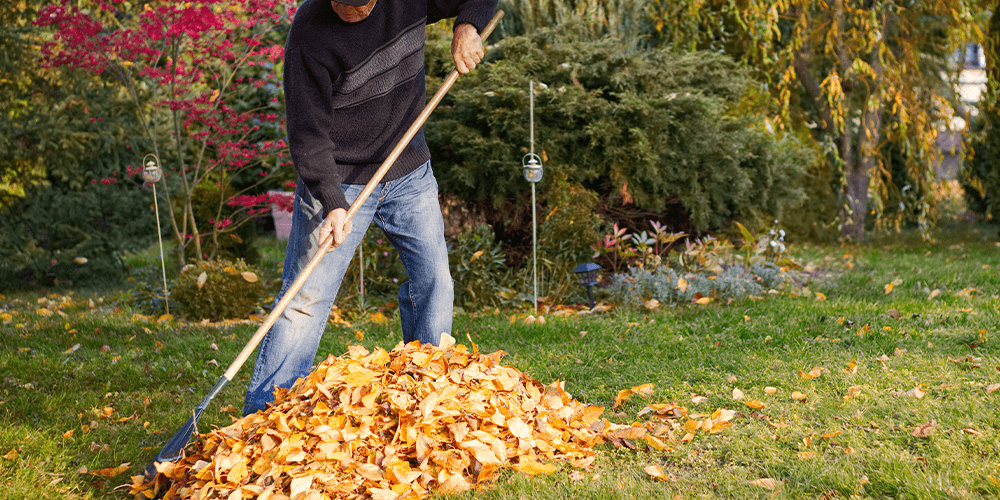
What Should I Do to My Lawn Before Winter?
Once you’ve finished protecting your precious trees, shrubs, and garden beds, there are a few ways you can clean up and winterize your landscape before the snow flies.
- Get weeding! While it’s a pain in the butt, weeding before winter is easier than spring-weeding and will give you a head start next growing season.
- Deadhead and cut back perennials.
- Turn off the water when you’re done with it, or else it may freeze your hose.
- Clean up and put away any tools and outdoor equipment.
- Bag up mouldy leaves but use healthy, dried leaves for your compost.
Winterizing your landscape protects what matters most and helps you start spring on a high note””and Salisbury’s landscaping services in Edmonton can help!

